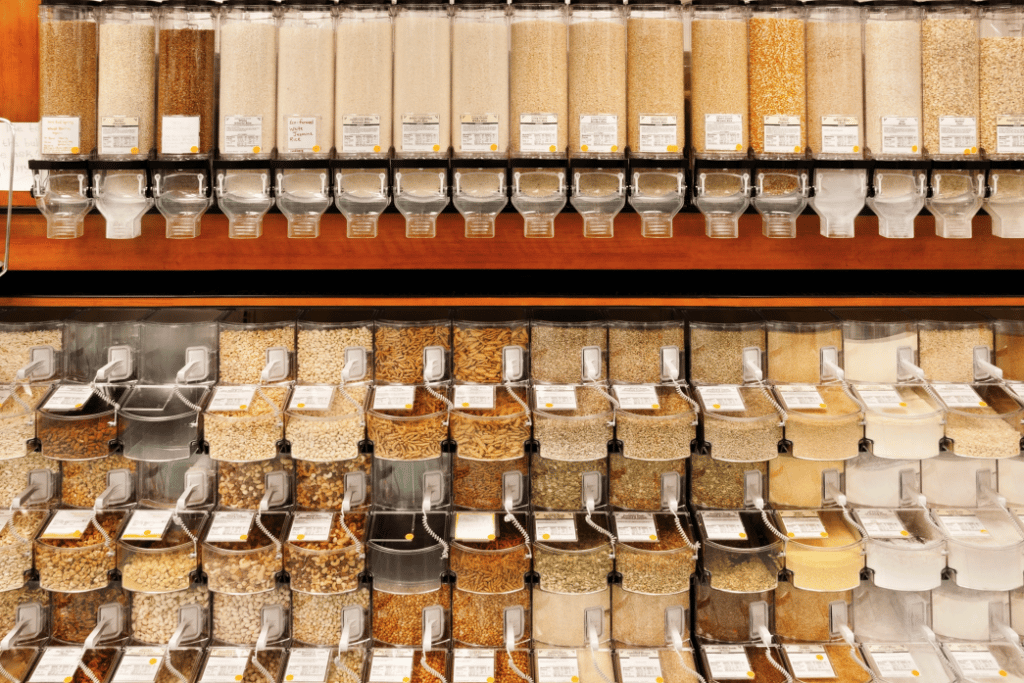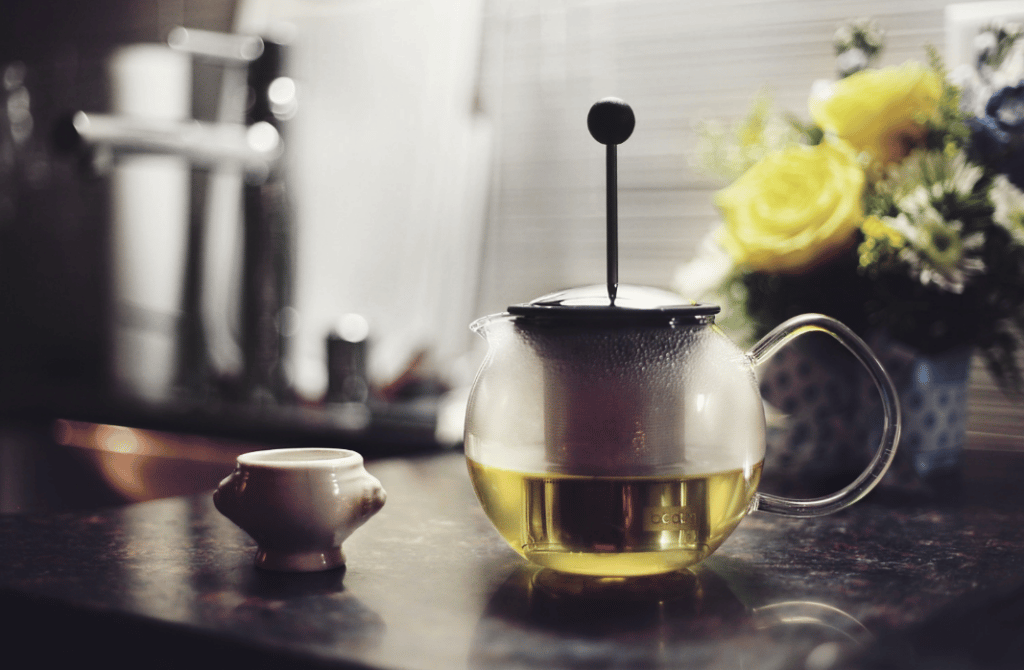When I was a naturopathic student, I was faced with a nutritional conundrum. I found myself sitting in classes all day learning that the standard American diet was…well…S.A.D. Filled with preservatives and chemicals, and high in salt, trans fats and grease – the food on this continent is cheap, but is leading us North Americans to an early grave of obesity and heart disease. This wasn’t a revelation to me, but at the same time, I was finding the big emphasis on organically-grown, wild Pacific, boneless skinless…well…expensive. As a student, how could I practice healthy eating on a budget? So with some tweaking to my diet and careful planning, I came up with a healthy reasonably-priced diet.
Here is what I found out, combined with some other tips I’ve learned along the way:
COULD YOU BOX THAT UP?
While I was a student, my household decided to order a food box of local organic vegetables from a CSA (Community Shared Agriculture). Each week we would get a box of fresh organic local vegetables delivered right to our door. Nice! I loved it. Besides the convenience of home delivery, it is cheaper by the box than to buy each vegetable individually. One drawback is that you don’t have control over which vegetables you receive. This may be a hard adjustment at first, but forces you to branch out into unfamiliar produce territory (who knew there were so many uses for celeriac?). There are several well-established CSA’s right here in town including Fair Share Harvest, Diversity Gardens (www.diversitygardens.com) by the Canadian Organic growers, and the Whole Food Box CSA at the Working Centre (www.theworkingcentre.org).
EAT LESS MEAT
Vegetarianism is not necessarily the right diet for everyone, However, vegetarian sources of protein are undeniably cheaper than meat, particularly when it comes to choosing healthy options. Organic boneless skinless chicken breasts, for example can cost up to $40 per kg ($18 per pound). Wild salmon is $17 per pound ($37 per kg); whereas organic non-GMO tofu at 2-3$ per pound ($6 per kg) is readily accessible. Many beans such as lentils and garbanzo beans (chick peas) are even cheaper in the dried form. Soak them overnight and simmer them on the stove for a while before dinner, and you have a great source of protein, fiber and minerals for one or two dollars. As a student, I was already vegetarian, so I didn’t miss the meat.
LOCAL MARKET
We are extremely fortunate to live in close proximity to not one but three Farmer’s Markets (Kitchener, Waterloo and St. Jacob’s). The prices are usually very reasonable, because, like a CSA, you are buying directly from the farmer. But be sure to ask the vendors where the food is coming from. There’s no guarantee its local.

GROW YOUR OWN
Growing your own food is the cheapest way to get organic vegetables and herbs. Tomatoes, carrots, peppers and zucchini are all quite easy to grow and packed with essential vitamins and minerals. If you don’t have a lot of gardening space, plant vegetables in pots and put herbs on your windowsill. Choose items that are pricey or hard to find off-season, but easily preserved. Basil, for example, is easy to grow and can be frozen or made into pesto and enjoyed year round. Community gardens are a very feasible option for KW residents without their own space for a garden. There are over 25 in operation in the twin cities. Contact the Community Garden Council of Waterloo Region (Public Health) at 519-883-2000 for more information.
PUTTING FOOD BY
When I was growing up on the farm my mom spent a great deal of time freezing and canning fruits and vegetables in the summer and fall, so that we could have homegrown foods year round. She would recruit us in the harvest season for such stimulating activities as “tipping beans” and “shelling peas”. It wasn’t fun, and I was too young to really appreciate having an overflowing freezer and pantry in the cold winter months. Now that I see the value of food preservation, I find myself wondering things like “how long should I blanche beans for” or “do I really need to hear a pop from my jars”? I can no longer ask my mom, but thankfully there are a lot of great resources out there. Check out: “Putting Food By” by Janet Greene. Also, OMAFRA’s Publication # 708 “Preserving Ontario’s Harvest”. This publication can be ordered online or by calling 1-888-466-2372.

BULK UP
The bulk bin! A friend of anyone on a budget. Most health food stores and grocery stores have bulk food sections with grains, pastas, nuts, seeds, flours and beans – you name it. Bulk prices are usually better, and save on wasteful packaging that usually just gets tossed. Bring your own bags to minimize your environmental impact even further.
WARNING!! EATING CHEAP AND HEALTHY TAKES MORE WORK
Canning tomatoes, shelling peas, soaking beans – it all sounds like a lot of work. And, frankly, it is. There is no way around it. But preserving food can be done with others to make it more fun (work? fun?). And some food preparation time can be cut down by planning ahead –make large dishes on the weekend, and portion them into small containers for the freezer, to provide a week’s worth of lunches.
Now that I’m a naturopath, finances aren’t as much of an issue. But I still try to eat well and save money doing it. Maybe it’s like our grandparents who lived through tough economic times – once a penny pincher, always a penny pincher!
TOP 10 HEALTHY CHEAP FOODS
Here I’ve compiled a list of ten of the cheapest nutrient-rich foods (in no particular order). Each of these costs less than $1 per serving. Eat these foods, be healthy, save money.
1. LENTILS (and other dried beans)
Lentils are rich in dietary fibre, protein and folate – an important B vitamin that helps lower homocysteine in the body. (Homocysteine is an amino acid which increases your risk of heart disease.) One cup provides 90% of your daily folate requirement.
2. SPINACH
Spinach and other leafy greens are an excellent source for bone building nutrients especially vitamin K, which activates osteocalcin, essential for bone mineralization.
3. (GROW YOUR OWN) SPROUTS
Sprouts have 3-5 times the vitamin content of the seed they sprouted from; in fact, ½ cup of most sprouts contains more vitamin C than 6 glasses of orange juice.
4. SUNFLOWER SEEDS
These seeds are an excellent source of Vitamin E, the body’s primary fat-soluble antioxidant – 1/4 cup gives you 90% of your RDA. A 2002 study published in the Journal of the American Medical Association found that those people who consumed the most vitamin E–from food sources, not supplements — had a risk of Alzheimer’s disease that was 67 percent lower than those eating the least vitamin E.

5. GREEN TEA
There are abundant healthy-promoting flavonoids in green tea such as epigallocatechin-3-gallate (EGCG). Green tea is one of the most extensively researched health products out there. Green tea drinkers are at lower risk for viral infections, heart disease, cancer, stroke, osteoporosis, etc. etc. Drink up!
6. EGGS
Eggs have gotten a bad nutritional rap based on their cholesterol content. But eggs raise both HDL (good cholesterol) and LDL (bad cholesterol) providing a net benefit for heart health. Eggs are loaded with riboflavin, folate, vitamins B6, B12, D, and E, and iron, phosphorus, and zinc. And the protein in eggs have the highest biological value – a measure of how well the protein meets our body’s needs – of any other food. In fact, eggs are frequently used as the standard for measuring the protein quality of other foods.
7. GARLIC
Garlic is another very well-researched health product with wide-ranging benefits including cardiovascular, antimicrobial, anti-inflammatory, and anti-cancer. One of its sulfur-compounds, allicin, has been shown to be effective against all types of pathogens including viruses, bacteria, and yeast. To ward off a cold, a bulb of garlic is the best bang for your buck.
8. BROWN RICE
Whole grains have a lot more fibre and nutrients than refined grains which is good for heart health and weight loss. In a recent Harvard medical School study, weight gain was inversely proportional to high-fibre whole grain foods. For a few dollars more, try quinoa instead, an ancient grain with more protein than rice.
9. WATER
Our bodies are 70% water, and most nutrients move around our body via water. There are myriad benefits to drinking more water from increased energy to decreased heart disease risk. One study from Loma Linda University, published in the American Journal of Epidemiology (Vol. 155, No. 9) found that those people drinking 5 glasses of water or more per day were 50% less likely to die from a heart attack than those drinking less. Researchers said it was as important as diet, exercise and smoking cessation.
10. CABBAGE
Cabbage is loaded with sulforaphane, a chemical that increases your body’s production of enzymes that disarm cell-damaging free radicals and reduces your risk of cancer. Cabbage can be thrown into a crock with some salt and fermented into sour kraut, just in time for Oktoberfest. Sour kraut is packed with beneficial bacteria for a healthy gut and a healthy immune system.
The author used some information from
World’s healthiest foods www.whfoods.com
Men’s Health Magazine www.menshealth.com

